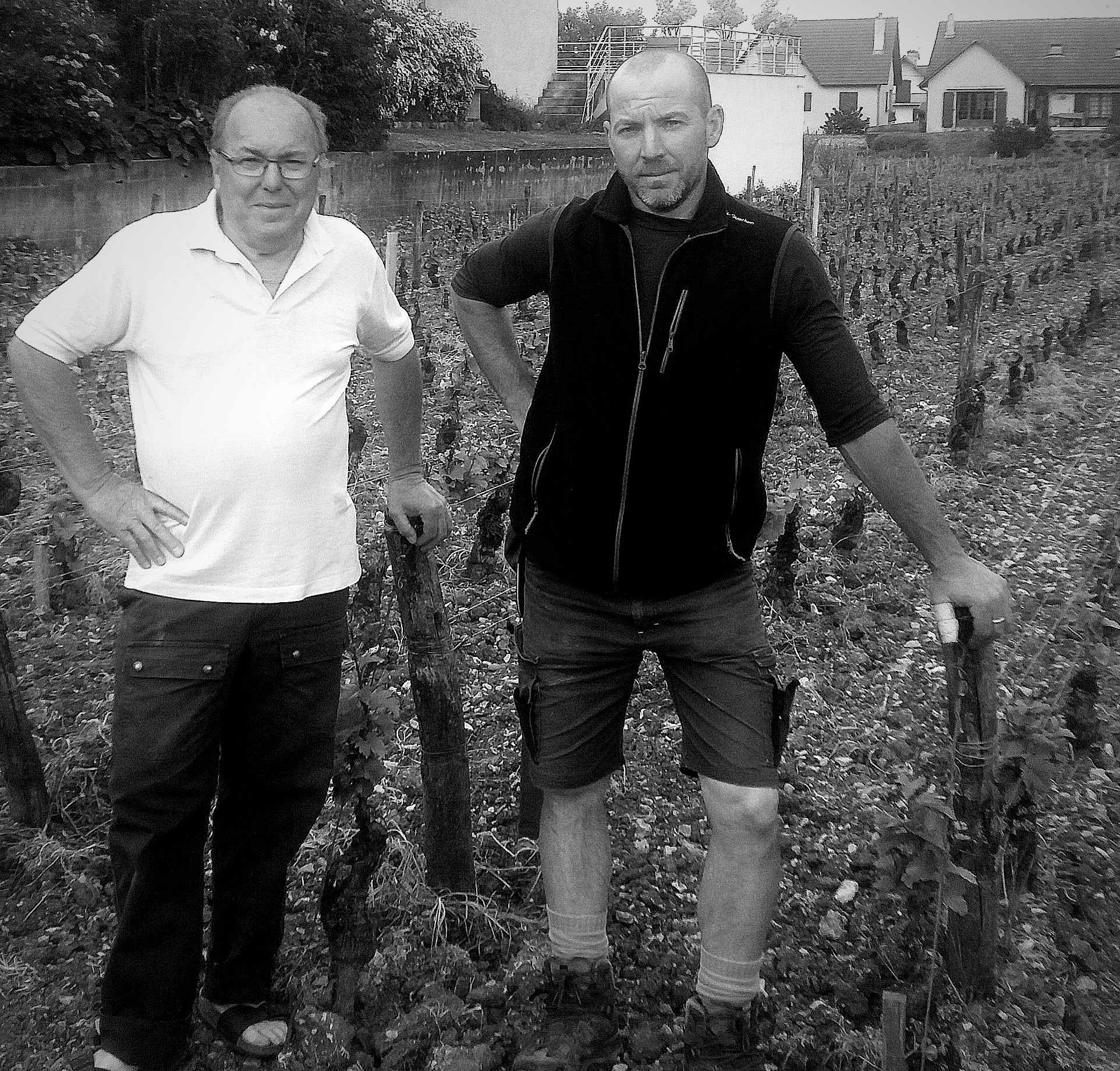Since 2019, he has been making a name for himself. Even though his father and mother are still very much involved in the family estate in Morey-Saint-Denis, Laurent Peirazeau manages his 3.6 hectares of 15,000 bottles a year, across 13 appellations, in his own way, fervently. Like his ancestors, from the vineyard to the cellar, and in today’s fashion, on the marketing side. For Athenaeum, he tells us all about himself.
How did you get into wine?
I’ve always worked in it. As far back as I can remember. Admittedly, I’ve regularly gone off on a tangent to see if the grass was greener elsewhere – between father and son, things are often tense… – but I’ve always come back. For about ten years, between the ages of 20 and 30, my brief experiences as a carpenter, butcher, undertaker… didn’t hold me back. I always returned to the vineyard. And then, 5 years ago now, my father slowly gave up. But I didn’t. Quite the opposite… I’ve mainly developed international markets. In 2023, 70% of production was bottled, a third of which was for France. The remaining 30% was reserved for the wine trade. Not grapes. Out of the question. We make our own wine…
What is your approach in the vineyards?
For me, that’s where it happens. Two years ago, I was doing everything on my own. Now I have someone to help me. My body speaks for me. At 51, I have two damaged tendons, two hip replacements, constant tinnitus… But don’t worry, I’m fine. As long as I can get up to go to the vineyards, I’ll do it: 65% of the wine is made there. You have to plough at the right times, not over-till – no more than three times, in my case – of course lift properly… but above all prune well. You can keep a tree for 50 to 60 years. And everyone knows: the older, the better.
And what about treatments?
I use integrated growing methods. No acaricides and even less insecticides. No way. There never has been and there never will be. I try to limit myself to copper and sulphur. The fact remains that the vines are tired. All these climatic upsets are disrupting them. When it rains, it comes in buckets; when it’s hot, it lasts for weeks… So if I have to intervene, I do. Particularly at flowering time. I can’t play with fire on 3.6 hectares.
How do you work in the cellar?
That’s easier. Let’s be honest: I’m not a trained oenologist, I just have the basics. So, I compose. I make wine like the old-timers. When the grapes arrive, the harvest is 100% destemmed and then put into vats with a little SO2. That’s the minimum. Otherwise, out of 10 cuvées, you throw away 8. Then cold maceration for 4 days and I let it go… My cuvaisons last between 2 and 3 weeks. I always have. The wine lives its own life. It rises and falls in temperature on its own. During this phase, I don’t cool it, I don’t heat it, I just keep an eye on it: I listen to the lovely sound of the wine crackling. On the other hand, I do pluck the wine and bring it back up. This is very important, to give air to the natural yeasts and help them develop. At 25-27°C, I decant, press, put the wine back in the vat, leave it to rest for a week or so, and then pour. Here, I prefer Chassin. Their barrels go well with my wines, which are all round and very feminine. When I can, out of three barrels, I put one new, one with one wine and one with two. That’s it, the job’s done! The wine is matured for 14 months and then bottled by a third party. Well, let’s go and taste it now?

